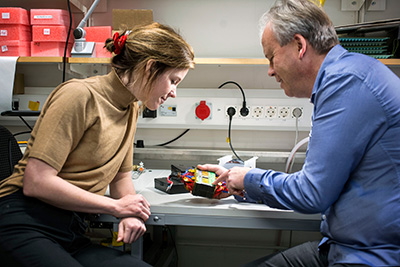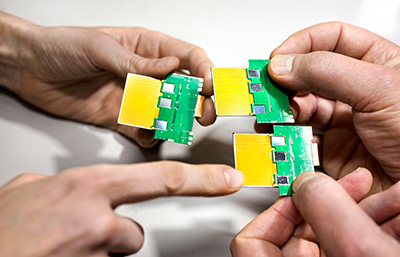X-ray technology from KTH goes global
World-leading X-ray technology from KTH as the global standard within healthcare. This is the likely result of GE Healthcare acquiring Physics Professor Mats Danielsson’s company that has developed the computed tomography (CT) of the future.
“This is an acknowledgement of the research we have done. Becoming part of GE Healthcare, the international market-leader within healthcare technology, means our technology can become the standard within healthcare for a very long time to come,” says Danielsson.
The X-ray technology, a detector that counts every photon, has been developed by researchers over a number of years and enables image quality to be vastly improved in terms of both resolution and contrast, without increasing the radiation dose.
The sharpness in the images means, for example, that even very tiny cancer tumours can be detected and monitored to see how they are developing and responding to medical treatment.
“The number of examinations can also be minimised and invasive procedures that are required to make a diagnosis today, can be avoided,” Danielsson explains.

“By obtaining more certain diagnoses at an earlier stage, many lives can be saved. Diseases can be detected when they can still be cured, and this also includes heart and cardiovascular diseases, strokes. It will also be important within emergency healthcare, such as after road traffic accidents, for example.”
Unique solution
This is not the first time Danielsson has brought health technology innovations from lab to market. The most recent was a mammography camera that was also based on technology with a photon counting detector.
One unique detail in this Swedish technology is that the detectors are made of silicon. According to Danielsson’s research group, silicon is the best solution to satisfy clinical requirements and the purest material that can be used for detectors. Other international developers of X-ray detectors use various cadmium alloys.
“We were an outsider for several years when there was a degree of scepticism about our ideas. But the tide has turned and when we met GE Healthcare for the first time in 2015, we had the confidence to demonstrate how we would be able to meet the tough requirements for computed tomography: high effectiveness, very high flows of X-ray photons and with good energy resolution and small pixels,” says Danielsson.

His interest in developing better imaging systems within healthcare dates back to when he was researching into particle physics at CERN in the late 1990s. Danielsson’s ideas have been inspired by the detector that discovered the top quark in 1995, which is similar to the detectors used in particle physics experiments today.
Particle physics the inspiration
His experiences of building advanced instruments, analysing and processing enormous volumes of data got him thinking about how particle physics could benefit healthcare.
“We could measure the momentum of the particles and energy very accurately and with high time resolution and I saw a chance and an opportunity to develop basic research for medical purposes.”
Since then he has been involved in several start-up companies within the healthcare technology area – some of which have been acquired by large international companies – and contributed to over 100 patents.
“Being able to see what you have been working on become a product, that it will have an application, has been the driving force for me. Research often ends with a published article – we have been determined to go the whole way to the patient end.”
How was the journey from basic research to innovation and world-leading X-ray technology?
“You almost have to pinch yourself. We have always believed in our solution, but to have it confirmed – that’s incredibly pleasing.”
Danielsson has been on part-time leave from his professorship while developing the X-ray detector. He is now returning to teaching in engineering physics and healthcare technology.
“It will be fun meeting them and being able to provide concrete examples of how you can use your physics knowledge,” he says.

